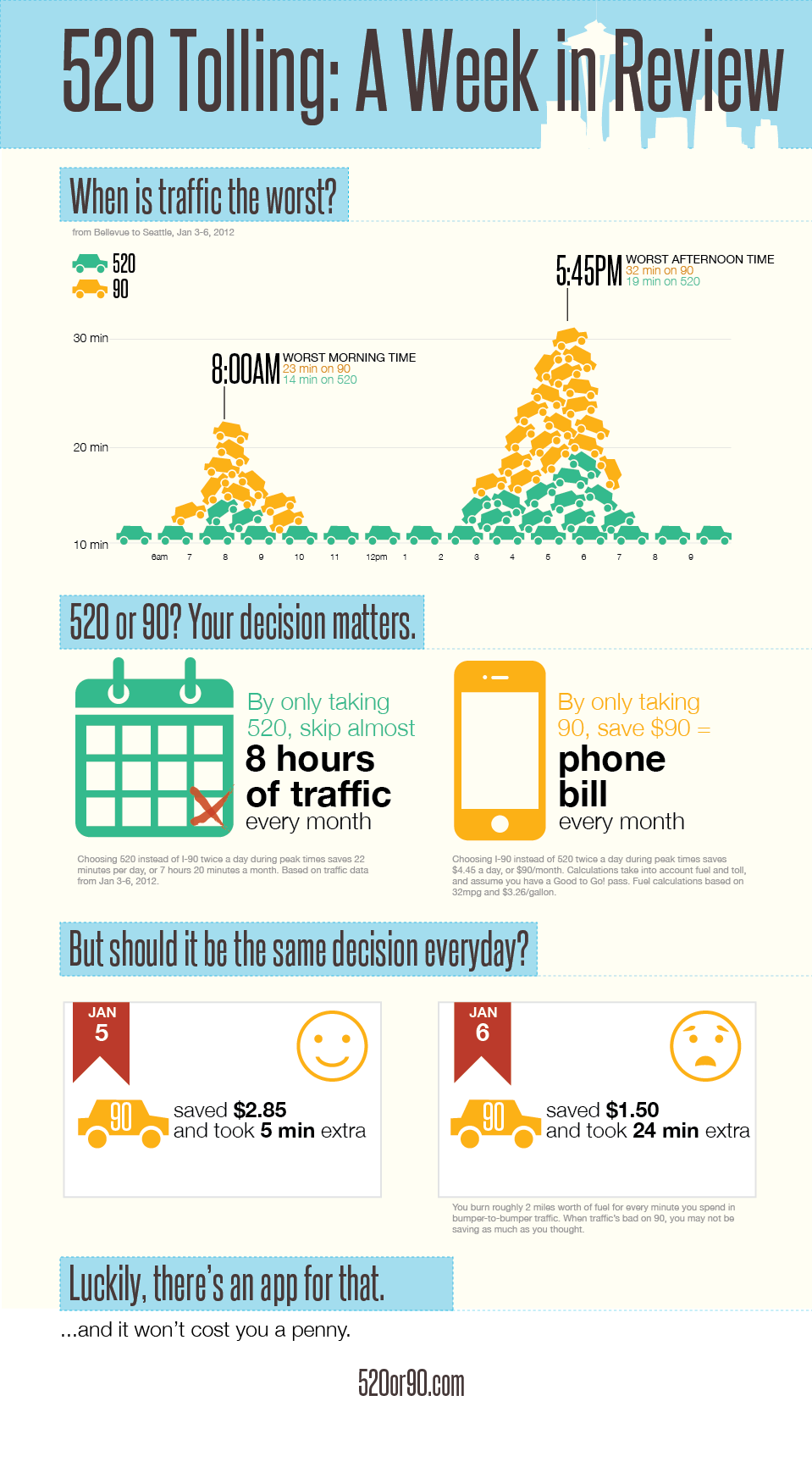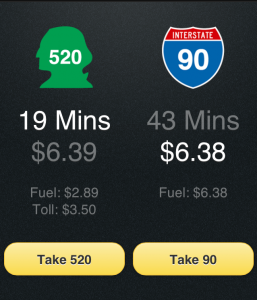Toll or No Toll? Battle of the Bridges Just Got Hot in Seattle – Decision-Making Tools Aim For the Hearts, Minds and $$ of Commuters
(Source: Transportation Issues Daily, Komonews.com, Seattle Times)
The toll company operating the tolled bridge on Highway 520 in Seattle, WA has published the below infograph, which makes a compelling case to the customers in the region against using the congested bridge on I-90, just a few miles away. Both bridges across Lake Washington connect downtown Seattle with a very large population and employment region. The overall cost savings and reduction in travel times offer a great incentive to the drivers who favor the toll road.
In addition to the above , the commuters also have another handy decision-making tool – a smartphone app titled “520 or 90” whose tag line sells it easily: “Find out which bridge is faster or cheaper in less than 10 seconds.”
The app creators expect drivers to save 8hrs of travel time per month if they took 520, which may only cost $90/month in tolls, the rough equivalent of a monthly phone bill. Those who opt to take I-90 may save the $90/month but the trade-off is eight extra hours stuck in traffic.
Local news portal Komonews.com indicates the faster travel times on the toll road 520 were due to a reduction in traffic volume as more driver quit the 520 to save the $$. It also quoted the researchers at INRIX, a well known traffic data company, saying that before the toll was implemented, I-90 drivers were going twice as fast as their 520 counterparts.
According to Seattle Times, the traffic volume on 520 has dropped of nearly 40% after the implementation of the tolls. It observed that much of the traffic, as expected, shifted to I-90, where volumes were up 20 to 25 percent for the morning but only 3 to 7 percent in the evening. In addition, the local transit operator (King County Metro) expects ridership on its cross-lake routes to pick up by 15 percent as a result of the tolls, spokeswoman Linda Thielke said. Riders on several routes confirmed buses were more crowded Monday.


